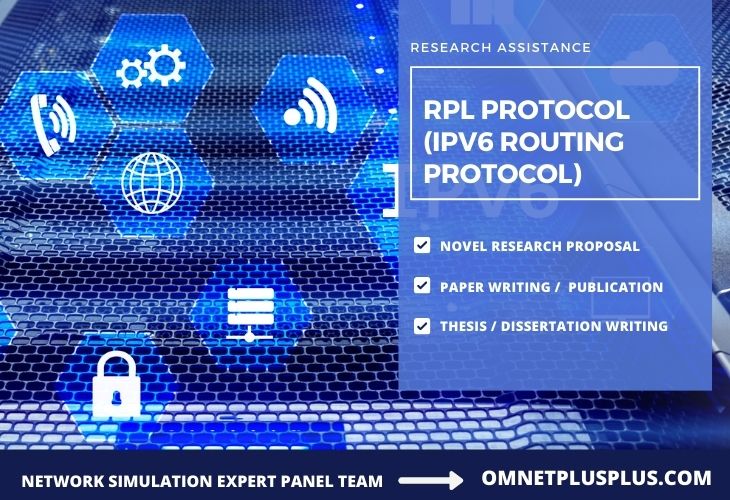To defeat Low power and Lossy Networks (LLNs-RPL) routing complications, the IPv6 Routing RPL protocol is designed. For this, Dissertation Topics on RPL Protocol helps to apply effective measures to minimize energy consumption. For instance, the dynamic sending rate for control messages and consistent topology addressing for data packets transfer.
On the one hand, the IPv6 protocol supports traffic in an upward direction. On the other hand, it supports traffic flow from the gateway node to all other network contributors. To the great extent, Dissertation Topics on RPL Protocol have forked out the common question unclear on everyone’s mind.
Why RPL protocol is used?
To be specific, RPL Protocol supports an extensive range of link layers along with limitations, potential losses, and devices with restricted resources. This protocol enables us to create network routes, share routing information, and adapt the topology in a very short period in an efficient way.
Network devices that are running protocol should ensure that there are no cycles exist in the connection. To make this happen, Destination Oriented Directed Acyclic Graph (DODAG) is built and routed at a single destination.
Exclusively, we are going to see about a couple of emerging and high-demand research areas of Networking. And they are Routing and Security which receive more attention among research scholars and their panel of members.

How routing performs in RPL Protocol?
Initially, the network builds DODAG at a high rank from the root node.Next, the rest of the nodes link with the parent node based on rank. Consequently, it is considered to be an important parent selection topic in DODAG.
From now, in RPL the root node will play as a server that gathers data from other nodes in DODAG. And for this data collection, several methods can be used. Then we will assess the performance of RPL based Routing in terms of several metrics. Let’s have a glance over some of the routing metrics for LLNs.
What are the metrics for routing in RPL Protocol?
- Topology-based
- HC: Hop-Count
- Link-based
- ETX: Expected Transmission Count
- ETT: Expected Transmission Time
- PFI: Packet Forwarding Indication
- LQL: Link Quality Level
- LTR: Link Transmission Reliability
- RSSI: Received Signal Strength Indication
- PLR: Packet Loss Rate
- Link Latency
- Node-based
- RE: Remaining Energy
- MLT: Maximum Life Time
- ERNT: Extended RPL Node Trustworthiness
Security in RPL Protocol
RPL protocol is challenged to a large variety of attacks which has a significant impact in terms of network performance and resources. As a result, security poses a basic factor place for successful IoT application deployment. Thus, it is important to design an effective mechanism for providing secure routing communication among IoT devices.
However, the message security ensures privacy and reliability of data packets in transmission and authentication, the attacks launched by attackers still exist against the IoT hosts. Primarily these attacks are intended to interrupt the network. Usually, Routing attacks are found in a low-power wireless network. The other most common network attacks from a routing point RPL are given as follows,
- Spam DIS
- Version Number Attack
- Sybil and also Mobile Sybil
- DAO Inconsistency and Insider Attack
- Blackhole, Wormhole, and Grayhole
- Hatchetman and Jamming Attack
- Packet Dropping and Energy Depletion
Moreover, Dissertation Topics on RPL Protocol will give more information on security measures in RPL Protocol Routing. By the way, RPL also offers per-hop security among two neighboring nodes which shield RPL messages. Here, routing layer security at the RPL layer is not required if link-layer security at per hop is enabled. As well, this security protects the integrity of both the link layer and upper layers (include RPL). Hence, it is more secure to provide security at the link layer by encrypting the following layer information,
- 6LoWPAN Layer
- Upper-Layer Headers
- Upper Layer Payloads
- RPL Layer Messages
To the end when we come across security issues in RPL Protocol, one should focus on energy constraints. Make sure that we minimize the use of tremendous energy in routing. If we verify the particular node’s security need does not meet a certain value then that specific node request will drop.
If you have any interest in the above-discussed areas, you can contact us. Our experienced scholars will guide you in a proper way through recent research ideas on RPL protocol.
